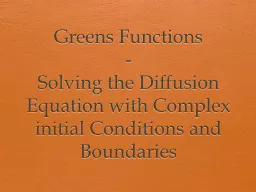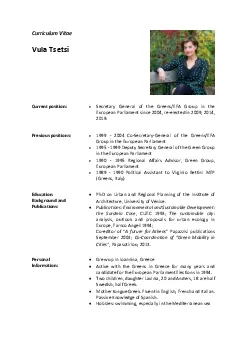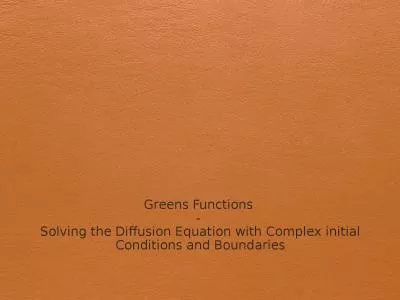PPT-Greens Functions
Author : karlyn-bohler | Published Date : 2016-04-30
Solving the Diffusion Equation with Complex initial Conditions and Boundaries George Green George Green 14 July 1793 31 May 1841 was a British mathematical physicist
Presentation Embed Code
Download Presentation
Download Presentation The PPT/PDF document "Greens Functions" is the property of its rightful owner. Permission is granted to download and print the materials on this website for personal, non-commercial use only, and to display it on your personal computer provided you do not modify the materials and that you retain all copyright notices contained in the materials. By downloading content from our website, you accept the terms of this agreement.
Greens Functions: Transcript
Download Rules Of Document
"Greens Functions"The content belongs to its owner. You may download and print it for personal use, without modification, and keep all copyright notices. By downloading, you agree to these terms.
Related Documents














